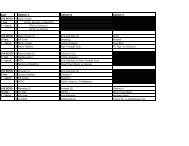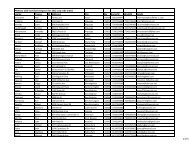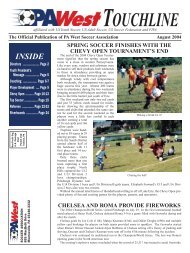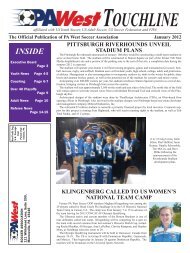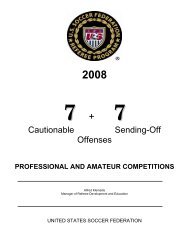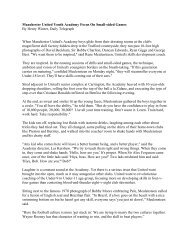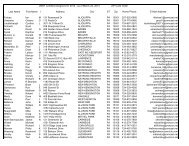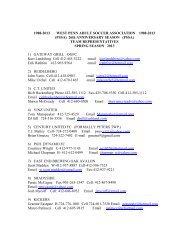LONG-TERM ATHLETE DEVELOPMENT: TRAINABILITY IN ...
LONG-TERM ATHLETE DEVELOPMENT: TRAINABILITY IN ...
LONG-TERM ATHLETE DEVELOPMENT: TRAINABILITY IN ...
Create successful ePaper yourself
Turn your PDF publications into a flip-book with our unique Google optimized e-Paper software.
weight; medicine ball and Swiss ball exercises. Children should be introduced to<br />
the simple rules and ethics of sports. No periodization takes place, but all<br />
programs are structured and monitored. Activities revolve around the school year<br />
and during summer and winter holidays, multi-sport camps are recommended. If<br />
children and parents have a preferred sport, participation once or twice per week is<br />
recommended, but participation in other sports three or four times per week is essential<br />
for future excellence. If the children later decide to leave the competitive stream, the<br />
skills they have acquired during the Fundamental phase will still benefit them when they<br />
engage in recreational activities, which will enhance their quality of life and health.<br />
Stage 2 – The learning to train stage<br />
AGE: Males 9 – 12 / Females 8 – 11 years<br />
Objective: Learn all fundamental sports skills (build overall sports skills)<br />
Specialized movement skills are developed from age seven to age eleven, and are<br />
specialized sports skills. By passing the fundamental and specialized skill development<br />
phase is likely to be detrimental to the child’s future engagement in physical activity and<br />
sport. Early specialization in late specialization sports can also be detrimental to the<br />
proceeding stages of skill development.<br />
One of the most important periods of motor development for children is between the ages<br />
of nine to 12. During this time children are developmentally ready to acquire general<br />
overall sports skills that are the cornerstones of all athletic development.<br />
This is the ‘window of accelerated adaptation to motor coordination’. All fundamental<br />
movement skills should be further developed and general overall sports skills should be<br />
learned during this phase.<br />
If fundamental motor skill training is not developed between the ages of eight to 11 and<br />
nine to 12 respectively for females and males, a significant window of opportunity has<br />
been lost, compromising the ability of the young player/athlete to reach his/her full<br />
potential.<br />
Strength should be developed by medicine ball, Swiss ball and own body-weight<br />
exercises as well as hopping-bounding exercises (or routines). Endurance should be<br />
developed further by games and relays. Basic flexibility exercises should be introduced<br />
during this phase, while speed can be developed further with specific activities during the<br />
warm-up, such as agility, quickness and change of direction. Competition should be well<br />
structured. The most suitable framework is single periodization for this phase, however<br />
for a few sports, sport-specific needs will warrant double periodization (e.g. swimming,<br />
tennis). A 70:30 training/practice to competition-ratio is recommended.



